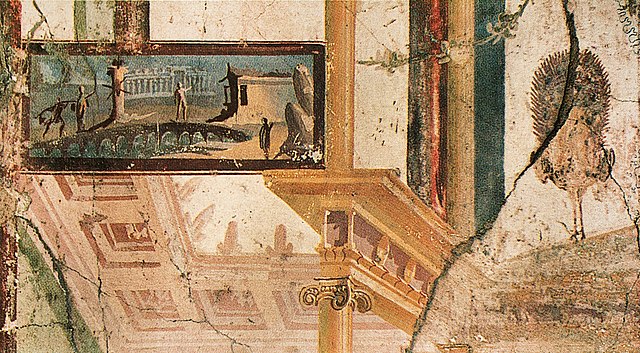In the modern study of the culture of ancient Greece and Magna Graecia, a pinax is a votive tablet of painted wood, or terracotta, marble or bronze relief that served as a votive object deposited in a sanctuary or as a memorial affixed within a burial chamber.
Such pinakes feature in the classical collections of most comprehensive museums.
Pinax on the south wall of the exedra in the House of the Prince of Naples in Pompeii
One of the Pitsa panels, 6th century BCE, paint on wood, showing an animal sacrifice in Corinth
Terracotta pinax of Persephone and Hades from Locri (Museo Nazionale di Reggio Calabria)
Pottery kiln, Penteskouphia
A votive offering or votive deposit is one or more objects displayed or deposited, without the intention of recovery or use, in a sacred place for religious purposes. Such items are a feature of modern and ancient societies and are generally made to gain favor with supernatural forces.
Votive paintings in the ambulatory of the Chapel of Grace, in Altötting, Bavaria, Germany
Mexican votive painting of 1911; the man survived an attack by a bull.
Part of a female face with inlaid eyes, Ancient Greek Votive offering, 4th century BC, probably by Praxias, set in a niche of a pillar in the sanctuary of Asclepios in Athens, Acropolis Museum, Athens
Bronze animal statuettes from Olympia, votive offerings, 8th–7th century BC








